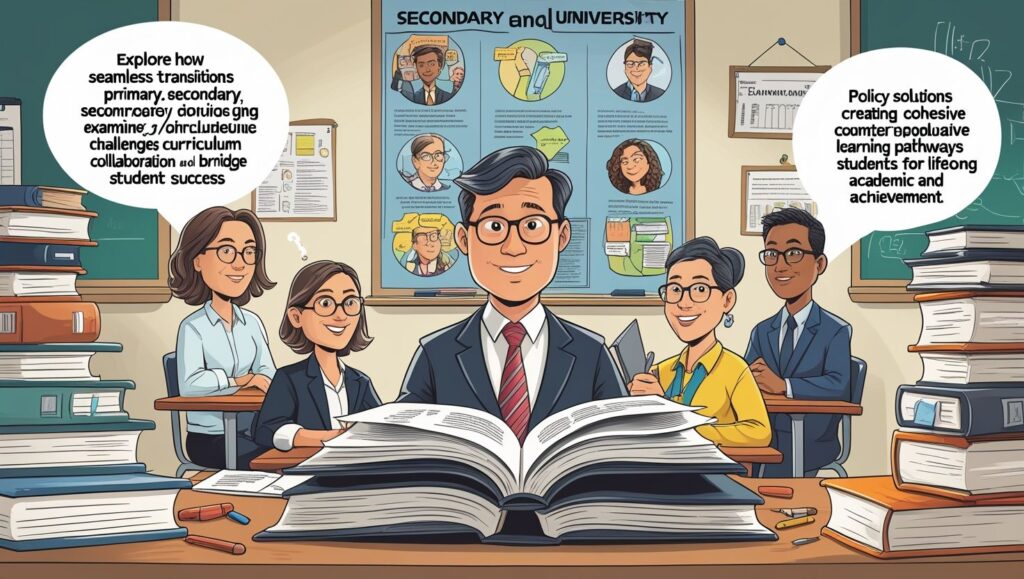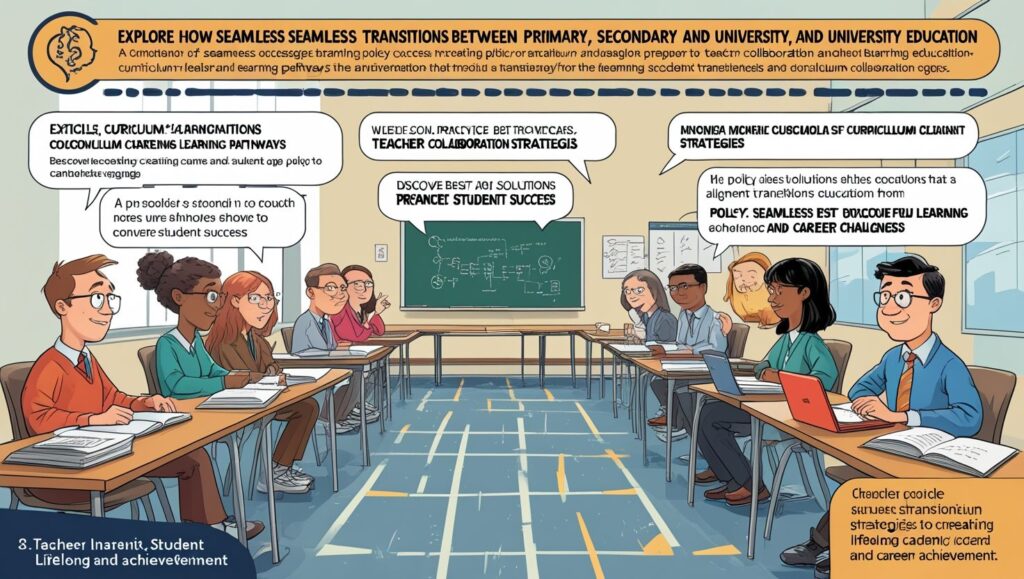Introduction
Bridging the Gap Learning Linkages in Education, Learning Linkages in Education, Education is a lifelong journey that begins in primary school and extends through university and beyond. However, the transition between different educational levels often lacks smooth continuity, leading to gaps in knowledge, skills, and student preparedness. Establishing strong linkages between primary, secondary, and tertiary education is crucial for creating a cohesive learning pathway that supports academic success, career readiness, and personal development.
This article explores the importance of seamless educational transitions, the challenges in maintaining continuity, and strategies to strengthen connections between schooling levels. By fostering better alignment in curricula, teaching methodologies, and assessment systems, educators and policymakers can ensure that students progress effectively from foundational learning to advanced specialization.
The Importance of Learning Continuity Across Educational Levels
A well-structured education system ensures that each stage builds upon the previous one, reinforcing core competencies while introducing new skills. Primary education lays the foundation in literacy, numeracy, and critical thinking, while secondary education expands subject knowledge and analytical abilities. University education then deepens specialization, research skills, and professional application.
When these transitions are poorly managed, students may struggle with abrupt changes in academic expectations, leading to disengagement or dropout. Conversely, strong linkages improve retention, motivation, and long-term success. For example, students exposed to inquiry-based learning early on adapt better to university research demands. Similarly, career guidance at the secondary level helps students make informed university choices.
Countries with robust educational linkages, such as Finland and Singapore, demonstrate higher student performance and smoother transitions. Their success stems from integrated curricula, teacher collaboration across levels, and early exposure to higher-order thinking skills.
Challenges in Maintaining Educational Linkages
Despite the benefits, several obstacles hinder smooth transitions between educational stages. One major challenge is curriculum misalignment—primary and secondary syllabi may not adequately prepare students for university rigor. Additionally, assessment methods vary widely, with schools focusing on rote memorization while universities emphasize critical analysis.
Another issue is the lack of communication between educators at different levels. Primary teachers may not fully understand secondary expectations, and university professors often assume prior knowledge that students lack. Socioeconomic disparities further exacerbate these gaps, as underprivileged students may not receive the same preparatory resources.
Finally, career guidance is often insufficient, leaving students uncertain about higher education pathways. Without early exposure to university expectations, many struggle with the autonomy and self-directed learning required in tertiary education.
Strategies for Strengthening School-to-University Transitions
To bridge these gaps, education systems must adopt cohesive strategies:
- Curriculum Alignment – Ensure that primary and secondary syllabi progressively build skills needed for university, such as research, problem-solving, and independent learning.
- Teacher Collaboration – Encourage dialogue between primary, secondary, and university educators to align teaching methods and expectations.
- Early Career Counseling – Introduce career guidance in secondary school to help students choose relevant university programs.
- Transition Programs – Implement bridging courses or summer schools to prepare students for university demands.
- Technology Integration – Use digital platforms to create seamless learning experiences, such as online preparatory modules.

Strengthening School-to-University Learning Linkages: Key Strategies
- Curriculum Alignment
- Develop vertically integrated curricula where primary education focuses on foundational literacy/numeracy, secondary education builds critical thinking/research skills, and university education emphasizes specialization
- Map learning outcomes across levels to ensure progressive skill development (e.g., introducing basic research projects in middle school)
- Align assessment methods to gradually shift from memorization-based tests to analytical evaluations
- Incorporate university preparatory content in senior secondary syllabi (academic writing, citation methods)
- Teacher Collaboration
- Establish professional learning communities connecting teachers across educational levels
- Conduct joint training programs on transition pedagogy and competency-based education
- Create observation/exchange programs where secondary teachers visit university lectures and vice versa
- Develop shared digital platforms for resource sharing and best practice documentation
- Early Career Counseling
- Implement structured career education programs starting from Grade 9
- Organize university immersion days and subject-specific career fairs
- Provide access to personality/aptitude assessments to guide academic choices
- Facilitate mentorship programs connecting students with university peers/professionals
- Transition Programs
- Design pre-university bootcamps covering essential skills (time management, academic research)
- Offer credit-bearing bridge courses in foundational subjects
- Create summer research opportunities for high school students at universities
- Develop peer support systems between incoming and current university students
- Technology Integration
- Implement learning management systems that track student progress across educational levels
- Utilize adaptive learning platforms to personalize skill development
- Develop virtual campus tours and online course previews for prospective students
- Create digital portfolios that document competencies from primary through tertiary education
These strategies collectively address the critical transition points in education, ensuring students develop necessary competencies progressively while reducing adjustment challenges between academic levels. Proper implementation requires coordinated efforts among policymakers, institutions, and educators to create truly seamless learning pathways.
By implementing these measures, education systems can create a more unified and supportive learning journey.

The Role of Policy in Ensuring Educational Continuity
Governments and educational institutions must collaborate to institutionalize smooth transitions. Policies should mandate curriculum coherence, teacher training on transition pedagogy, and funding for preparatory programs. National qualification frameworks, like those in Australia and Europe, help standardize learning outcomes across levels.
Additionally, partnerships between schools and universities—such as dual enrollment programs—allow students to experience higher education early, reducing adjustment difficulties. Policymakers must also address equity by ensuring underprivileged students receive transition support.
Conclusion: Building a Cohesive Educational Pathway
The journey from primary school to university should be a continuous, well-supported progression rather than a series of disconnected stages. By strengthening linkages through curriculum alignment, teacher collaboration, and policy reforms, education systems can enhance student preparedness and success.
Investing in seamless transitions not only benefits individual learners but also strengthens the overall quality of education. As the demand for skilled professionals grows, fostering lifelong learning pathways becomes essential for societal advancement. A cohesive education system is the key to nurturing adaptable, knowledgeable, and future-ready graduates.

2pg1jc